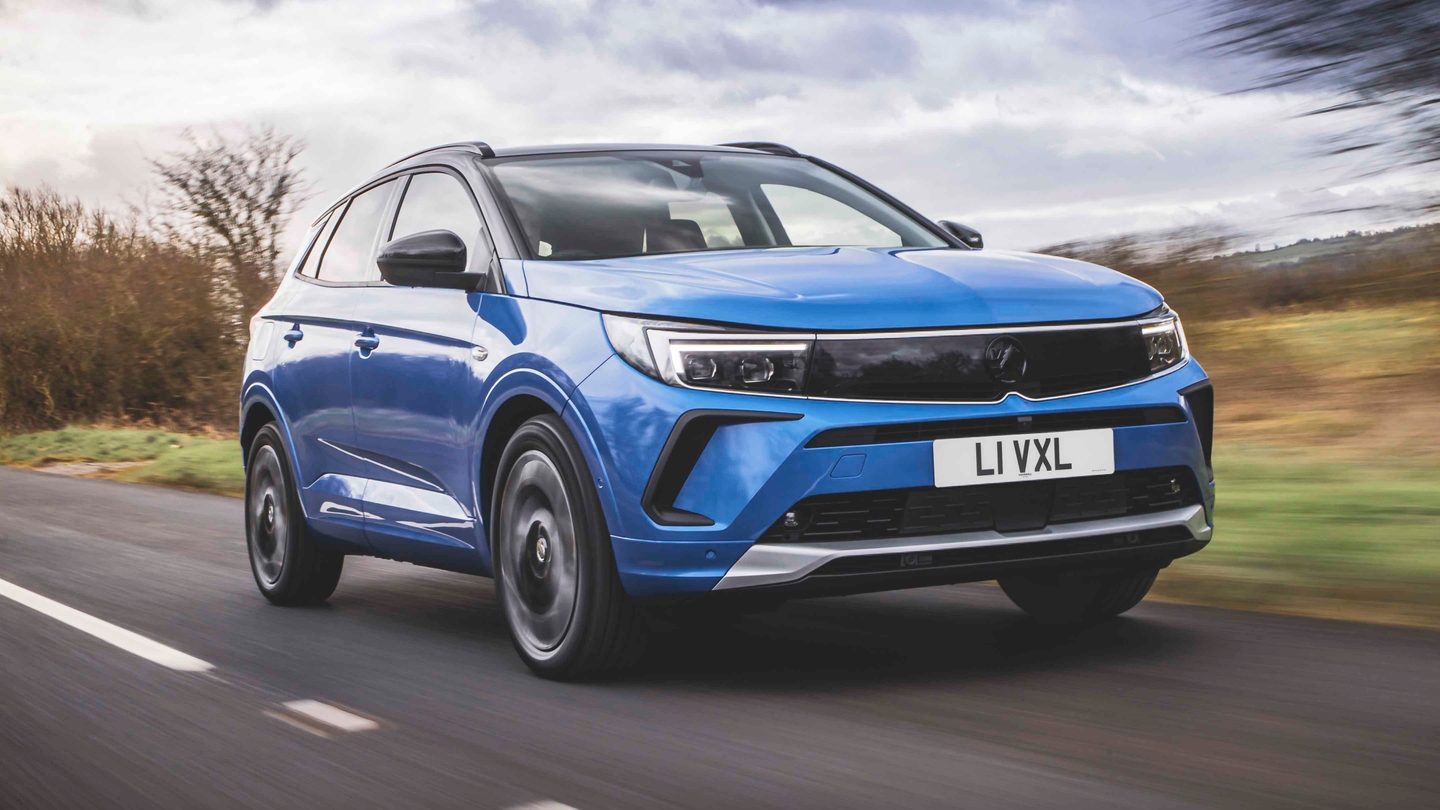

















Jeep Compass Review
The Jeep Compass is worth checking out if you want something a little different to the usual Qashqai and Kuga crowd.
It’s a family-size SUV with plenty of tech and the option of grippy four-wheel drive and some proper off-road tech – staying true to Jeep’s 4x4 ethos.
- Motorway comfort
- Intuitive interior
- Off-road capability on 4x4 models
- Not the most economical SUV
- Top models expensive
- Engines can be noisy
Should I buy a Jeep Compass?
Some Jeeps make you look like your whole lifestyle revolves around eating hot dogs while listening to Lynyrd Skynyrd, but the Compass doesn’t give off that vibe. It feels more European – it shares a lot with Fiat models – and is more suited to British roads like its midsize SUV rivals.
Of which there are many. To get to the Jeep Compass, you’d have to walk by the Nissan Qashqai, Peugeot 3008, Skoda Karoq, MG HS and Mazda CX-5, to name just a few. While most of those family SUVs never leave the Tarmac, the Compass has proper off-road ability if you pick a 4x4 model. It doesn’t embarrass Jeep’s illustrious heritage.
Even if you never use it, the thought that the extra grip is there is reassuring. It should come in handy if you live in remote parts of the country where gritters don’t dare to go. More recent Compasses get a four-wheel-drive plug-in hybrid ‘4xe’ model, which combines a petrol engine with a clean electric motor for the best official fuel economy in the range.
The Compass offers most of the practicality you’d expect from an SUV like this, and plenty of equipment too. And, as a nearly new or used model, it offers strong value for money. So, if the cost works out and you like the car’s chunky American styling, the Compass is a good buy.
Interior and technology

The Compass’ interior design is logically laid out and easy to use, so you might well get to grips with it quicker than something like a 3008 or Volkswagen Tiguan. Cars built since 2021 get a 10.1-inch touchscreen and a 10.25-inch digital instrument cluster, which initially look as good as anything from any of the Compass’ rivals.
There are still a lot of proper buttons and chunky-feeling controls for things like the climate control and drive modes, and a steering wheel that manages to avoid feeling cluttered. If you’re hunting around for buttons to control the volume and to skip between radio stations, your fingers will find them hidden on the back of the steering wheel.
You’ll need to give the infotainment system a bit of time to respond when you try to change the radio with that button – it hasn’t got the quickest reflexes. It’s not always super quick to respond when you press the icons on the screen, either. The on-screen graphics are simple and clear, although they’re not the sharpest.

The UConnect touchscreen has all the features you’d expect – there’s Bluetooth, DAB radio, extended climate control functions and a host of settings to play with – and the layout is well thought out. We like the always-there bar of icons at the bottom of the screen, which let you quickly skip to the area you want to get to. There’s also Apple CarPlay and Android Auto if you’d rather use the familiar apps and interface from your phone through the car’s screen.
The digital instrument cluster isn’t quite so clean, with lots of information displayed at once and all in variety of small fonts – so it can be a little hard to read at a glance. The unusual hexagon pattern at the bottom of the screen might distract some drivers, too.
The cabin looks pretty high quality, and there are some good materials. You’ll typically get contrast stitching and a few leather or leather-effect touchpoints, and our top-spec Trailhawk test car came with an appealing soft panel across the dashboard and enough metal-effect trim to liven the place up.
Jeep has changed the Compass’ trim level lineup a few times since it first went on sale in 2017, so you’ll find a range of different versions available. Longitude trim has all the must-haves ticked – there’s a reversing camera, keyless entry, climate control and the touchscreen. Higher-spec cars add heated seats and a heated steering wheel; the off-road-focused Trailhawk gets its own body kit and stickers, plus all-terrain tyres, underbody cladding and a full complement of equipment.
Practicality

If you’re a fan of taking the kitchen sink on holiday with you, the Compass might not point you in the right direction. The 438-litre boot is on a par with the likes of the Peugeot 2008 and Range Rover Evoque, and some 90 litres more than the Jeep Renegade, but it’s a bit less than most family SUVs, which typically get 500-600 litres of luggage space.
The high boot floor gets rid of any load lip so it’s not too difficult to put stuff in the boot, although you have to haul bulky items quite high up in the first place. If you’ve got a canine companion to consider, some dog breeds may struggle to jump into the Compass’ boot.
Our test car came with a full-size spare wheel, which is partly why you don’t get as much luggage space. If you were to swap it with a space-saver or remove it entirely, you’d have a bit more under-floor space to fill or to hide valuables out of sight.

You sit quite high up, which gives front-seat occupants good visibility of the road ahead and gives back-seat passengers plenty of space between the seat base and the floor. Legroom is decent enough unless the front seat is back as far as it can go, and there’s room to slide your feet under the front seats. Headroom is okay for anyone who’s not considerably taller than average, and back-seat passengers also get USB sockets and a fold-down centre armrest with cupholders. There are two Isofix points on the outer rear seats, and your kids will enjoy finding all the hidden Jeep ‘easter eggs’ dotted around the car.
Engines and performance
It’s good to see that the Compass has kept with the times with its engine choice – its initial petrol and diesel choices were rather uninspiring, but now there’s a choice of a modern turbocharged petrol engine with mild-hybrid assistance and a plug-in hybrid that can run on petrol or electric power.
On paper, the 4xe plug-in hybrid is by far the quickest and most powerful in the range. Roads aren’t made of paper, though, and the Jeep never feels as quick as the figures – 240hp and 0-62mph in 7.3 seconds – suggest. Once the battery’s empty and the 1.3-litre petrol engine has to do all the work, it feels laboured if you ask for full-beans acceleration. That’s partly down to the lazy automatic gearbox.

We’d need a longer test drive to confirm, but the Compass seemed to be thirstier than we’d expect when just running on petrol power. It definitely makes sense if you’re able to use its 30-mile electric range for most journeys and have access to an EV charger, but a rival SUV or nearly any diesel car is likely to be a better choice for long-distance drivers.
The other choice for nearly new Compass buyers is a 1.5-litre mild-hybrid petrol engine, which doesn’t boast the impressive stats of the PHEV – but it should offer a more consistent driving experience, with easily estimable fuel economy and performance. Its 0-62mph time of 10 seconds is reasonable for a family SUV, and at a relaxed pace it can manage 51mpg.
Driving and comfort
You’ll not only get the best fuel economy at a relaxed pace, but the Compass’ best driving experience, too. It doesn’t like being hurried, and you can feel that it’s not as adept at fast corners as something like a Ford Kuga or SEAT Ateca.
But it’s usually more comfortable than those cars, and better than many of its rivals too. We were impressed with its comfort and control on the motorway, with nasty expansion joints barely being felt through the cabin. The ride quality is one of the Compass’ best attributes – until you take a corner too fast and it starts listing like a ship in a storm.

The Trailhawk’s big, knobbly tyres kick up a fair bit of noise at high speed, but their big sidewalls offer a little extra cushioning for impacts. They also help this version go further off road than most rivals.
On the road, the steering is a little vague and there’s a noticeable dead zone either side of the straight ahead. In the ‘auto’ driving mode, the accelerator pedal can sometimes feel unconnected to the engine, such is the laid-back response, although it slightly improves in ‘Sport’ mode.
That won’t matter a jot if you’re actually planning to take your 4x4 off-road. The Compass is truly competent when the asphalt runs out and will leave any of the rivals we’ve mentioned far behind. The Trailhawk is designed for off-road use, with a higher ground clearance and approach angle, plus hill-descent control for slippery slopes and a low-range gearbox for crawling over jagged surfaces. It’s even better now that it’s only available as a hybrid, because the electric motor’s instant torque can get you out of sticky situations.







































































